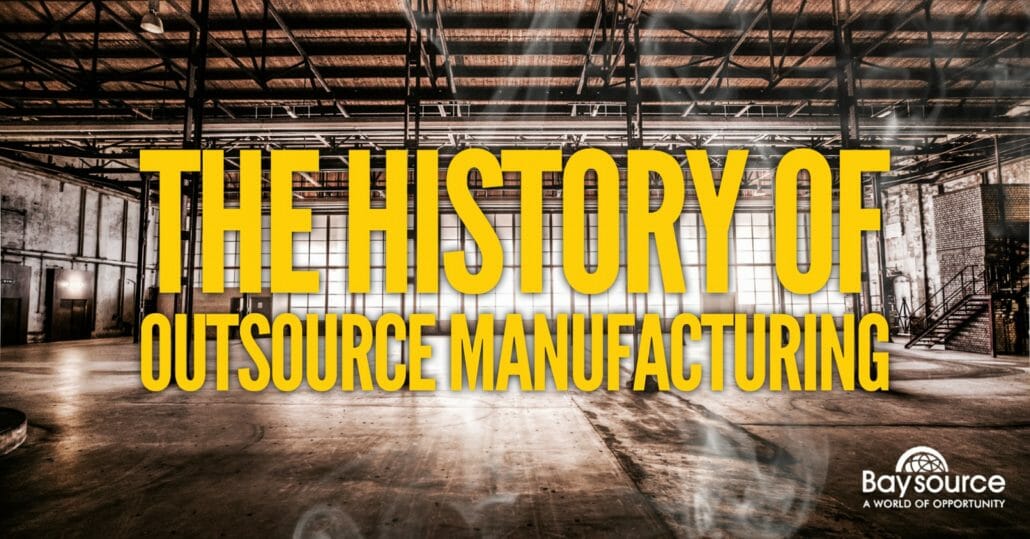
The structure in which American businesses operate today would not be possible without outsourced manufacturing. Prior to the Industrial Revolution of the 18th century, American companies had no choice but to produce goods in-house, in small quantities, with resources limited to their location and available distribution channels. It wouldn’t take long, however, for the explosion of productivity in the early Industrial age to transform global trade and create a whole new business model where outsourcing labor for less became a reality.
The Industrial Revolution
Outsourcing began as a disruptive business strategy in the early 18th century, when the global economic climate shifted from one of scarcity to one of abundance. Because of the wide scope of technological advancements, small businesses were able to produce products in mass quantity, making operational demands much more costly. Most companies until this point were completely independent; they were built and managed by a single team with little to no outside help.
However, the newfound ability to produce en masse posed new challenges for business owners – how to retain their business structure having labor costs go through the roof. This is when independent contractors started offering services to multiple clients, rather than working in-house for one. Accountants, lawyers, insurance companies, small scale distributors, and more were the first “outsourced” work in America.
Early Technological Developments that Shaped Outsource Manufacturing
The first major innovation that shaped outsource manufacturing was the railroad. The railroad system in America made it possible for businesses to produce goods in states with lower labor and raw material costs, then sell them in more affluent areas for a greater profit. It then became commonplace for factories to produce similar goods for different companies, beginning the true development of a division of labor between the manufacturer, distributor, and brand.
The second major innovation of the Industrial Revolution was in the field of communications: the telegraph. Remote communication paved the way for outsourcing across the country, and of course, eventually communications overseas. As advancements in transportation and communications continued, outsource manufacturing grew. Soon American businesses were able to send their manufacturing to Europe, and eventually Asian countries to produce goods of the same or better quality, at a significant cost reduction.
Offshore Outsourcing
As outsourcing became more commonplace in the business environment, more and more companies decided to send their manufacturing overseas in order to focus on the core objectives of their business. Many were willing to reallocate resources overseas in order to focus on branding and customer service, rather than the production of their goods.
During the 1970s, when consumer electronics became widely popular and available, it became commonplace to move manufacturing to the East. The advantages were primarily the lower labor costs, however cost savings due to U.S. tax environment and lax rules regarding employee work hours, benefits, and wages also attracted many American enterprises.
This fundamentally changed the way American businesses are run today. Most of our Fortune 500 are merely R&D plus a solid brand; they no longer produce their own products in-house.
Present-Day Outsource Manufacturing
In the 21st century, it is hard to find a consumer product that hasn’t gone overseas for at least a portion of its production. When companies develop strategic partnerships with contract manufacturers, they are able to focus on the core competencies of their business while producing the same quality products at a cost saving to consumers. It is a win-win for both consumer and company.
As new technologies are developed, companies can expect an even greater cost reduction, higher quality products from overseas partners, and growing opportunity to innovate and explore new territory with their products and services.

Follow Us